#nabil anani
Explore tagged Tumblr posts
Text

Nabil Anani, Palestinian Folklore, 2020.
Acrylic on canvas, 110 x 100 cm. Courtesy of Zawyeh Gallery.
#nabil anani#palestine#palestinian art#folklore#painting#trees#doves#leaves#hamsa#quilts#cactus#flowers
877 notes
·
View notes
Text

nabil anani, "eye on jerusalem," 2012, acrylic on canvas
166 notes
·
View notes
Text
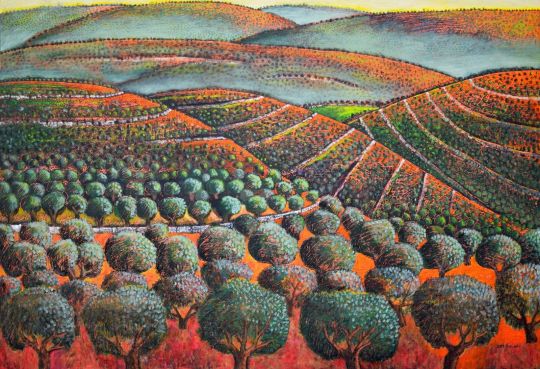
OLIVES FROM WEST RAMALLAH, Nabil Anani, 2013
177 notes
·
View notes
Text

Nabil Anani, Motherhood, 1995
#Nabil Anani#acrylic painting#20th century art#acrylic on canvas#Palestinian painter#20th century#Palestinian art#Palestine#motherhood#painting#art#1995
42 notes
·
View notes
Text

Stop the Genocide
Nabil Anani (2023)
34 notes
·
View notes
Text

Nabil Anani - STOP THE GENOCIDE,
21 notes
·
View notes
Text
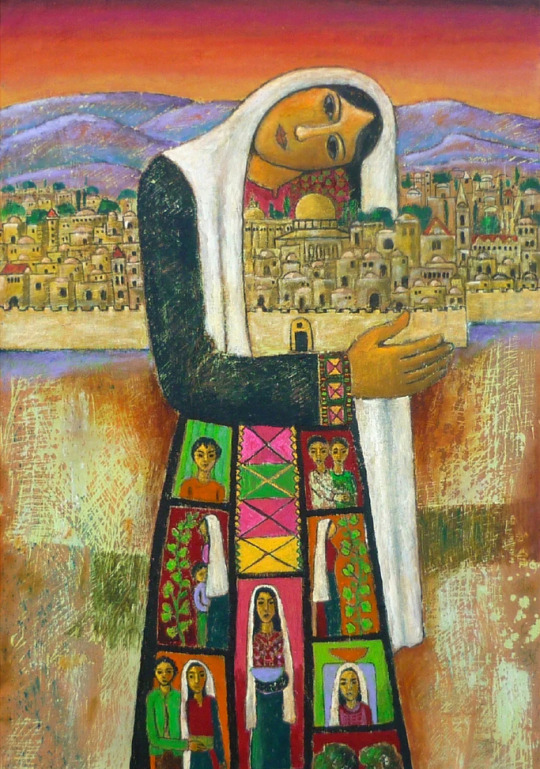
Mother's Embrace by Nabil Anani
25 notes
·
View notes
Text

Nabil Anani, Ein Sinya, 2018
#nabil anani#anani#ein sinya#2018#2010s#2000s#21st century#art#contemporary art#contemporary#painting
18 notes
·
View notes
Text

Jerusalem, Palestine
NABIL ANANI, Palestine
Jerusalem, 2013
Medium: Acrylic on canvas
110 x 299 cm
#artworks#palestine#jerusalem#2013#Jerusalem#Palestine#NABIL ANANI#folklore#free gaza#freedom#euronews#heart#free palestine#humor#funny#politics#pixel#meme#humanitarian#human rights#humanrights#dimension 20 fantasy high fantasy high junior year fhjy d20#fhjy#d20#FANTASY#DIMENSION#ART#ARTISTS#NEWS#UPDATE
2 notes
·
View notes
Text
IMPORTANT IMPORTANT
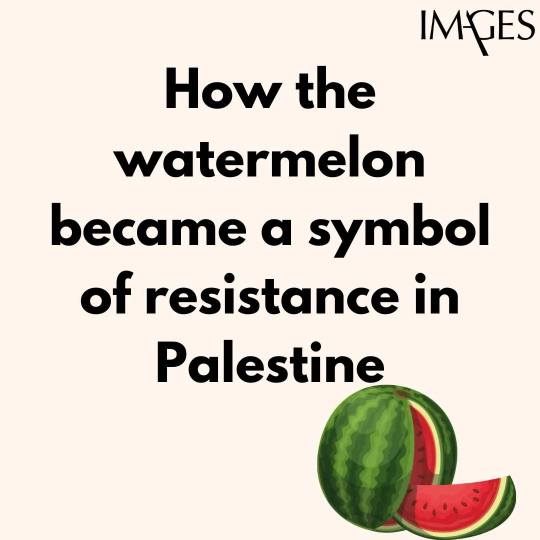


How the Watermelon Became a Symbol of Palestinian Solidarity
The use of the watermelon as a Palestinian symbol is not new. It first emerged after the Six-day War in 1967, when Israel seized control of the West Bank and Gaza, and annexed East Jerusalem. At the time, the Israeli government made public displays of the Palestinian flag a criminal offense in Gaza and the West Bank.
To circumvent the ban, Palestinians began using the watermelon because, when cut open, the fruit bears the national colors of the Palestinian flag—red, black, white, and green.
The Israeli government didn't just crack down on the flag. Artist Sliman Mansour told The National in 2021 that Israeli officials in 1980 shut down an exhibition at 79 Gallery in Ramallah featuring his work and others, including Nabil Anani and Issam Badrl. “They told us that painting the Palestinian flag was forbidden, but also the colors were forbidden. So Issam said, ‘What if I were to make a flower of red, green, black and white?’, to which the officer replied angrily, ‘It will be confiscated. Even if you paint a watermelon, it will be confiscated,’” Mansour told the outlet.
Israel lifted the ban on the Palestinian flag in 1993, as part of the Oslo Accords, which entailed mutual recognition by Israel and the Palestinian Liberation Organization and were the first formal agreements to try to resolve the decades-long Israeli-Palestinian conflict. The flag was accepted as representing the Palestinian Authority, which would administer Gaza and the West Bank.
In the wake of the accords, the New York Times nodded to the role of watermelon as a stand-in symbol during the flag ban. “In the Gaza Strip, where young men were once arrested for carrying sliced watermelons—thus displaying the red, black and green Palestinian colors—soldiers stand by, blasé, as processions march by waving the once-banned flag,” wrote Times journalist John Kifner.
In 2007, just after the Second Intifada, artist Khaled Hourani created The Story of the Watermelon for a book entitled Subjective Atlas of Palestine. In 2013, he isolated one print and named it The Colours of the Palestinian Flag, which has since been seen by people across the globe.
The use of the watermelon as a symbol resurged in 2021, following an Israeli court ruling that Palestinian families based in the Sheikh Jarrah neighborhood in East Jerusalem would be evicted from their homes to make way for settlers.
The watermelon symbol today:
In January, Israel’s National Security Minister Itamar Ben-Gvir gave police the power to confiscate Palestinian flags. This was later followed by a June vote on a bill to ban people from displaying the flag at state-funded institutions, including universities. (The bill passed preliminary approval but the government later collapsed.)
In June, Zazim, an Arab-Israeli community organization, launched a campaign to protest against the ensuing arrests and confiscation of flags. Images of watermelons were plastered on to 16 taxis operating in Tel Aviv, with the accompanying text reading, “This is not a Palestinian flag.”
“Our message to the government is clear: we will always find a way to circumvent any absurd ban and we will not stop fighting for freedom of expression and democracy,” said Zazim director Raluca Ganea.
Amal Saad, a Palestinian from Haifa who worked on the Zazim campaign, told Al-Jazeera they had a clear message: “If you want to stop us, we’ll find another way to express ourselves.”
Words courtesy of BY ARMANI SYED / TIME
#human rights#equal rights#freedom#peace#free palestine#palestine#free gaza#save gaza#gaza strip#gazaunderattack#hamas#watermelon#flag#time magazine#armani syed#amal saad#haifa#zazim campaign#palestinian flag#khaled hourani#nabil anani#genocide#apartheid#information#important#from the river to the sea palestine will be free
3K notes
·
View notes
Text

Nabil Anani, Olive Groves #6, 2020.
Mixed media on canvas, 100 x 100 cm. Courtesy of Zawyeh Gallery.
23 notes
·
View notes
Text

nabil anani, "vision," 2013, acrylic on canvas
98 notes
·
View notes
Note
helloooo my friend~ (hehe is it okay if i call you that?)
just thought i’d pop in and share some pretty art ^^
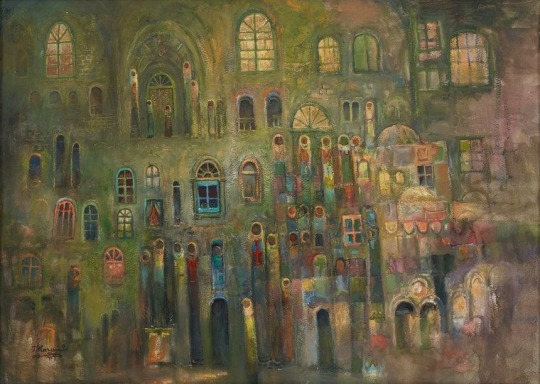
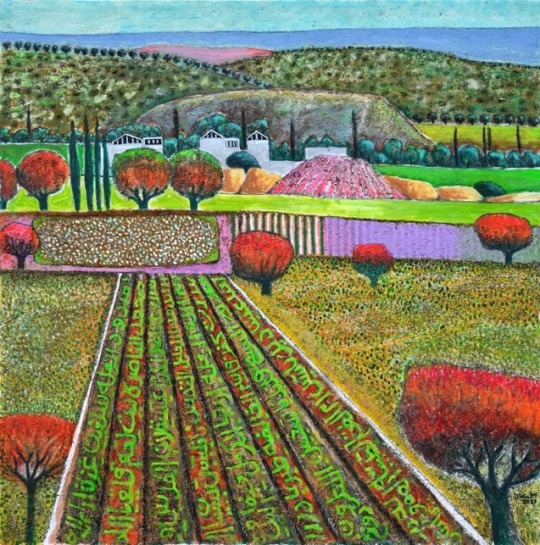

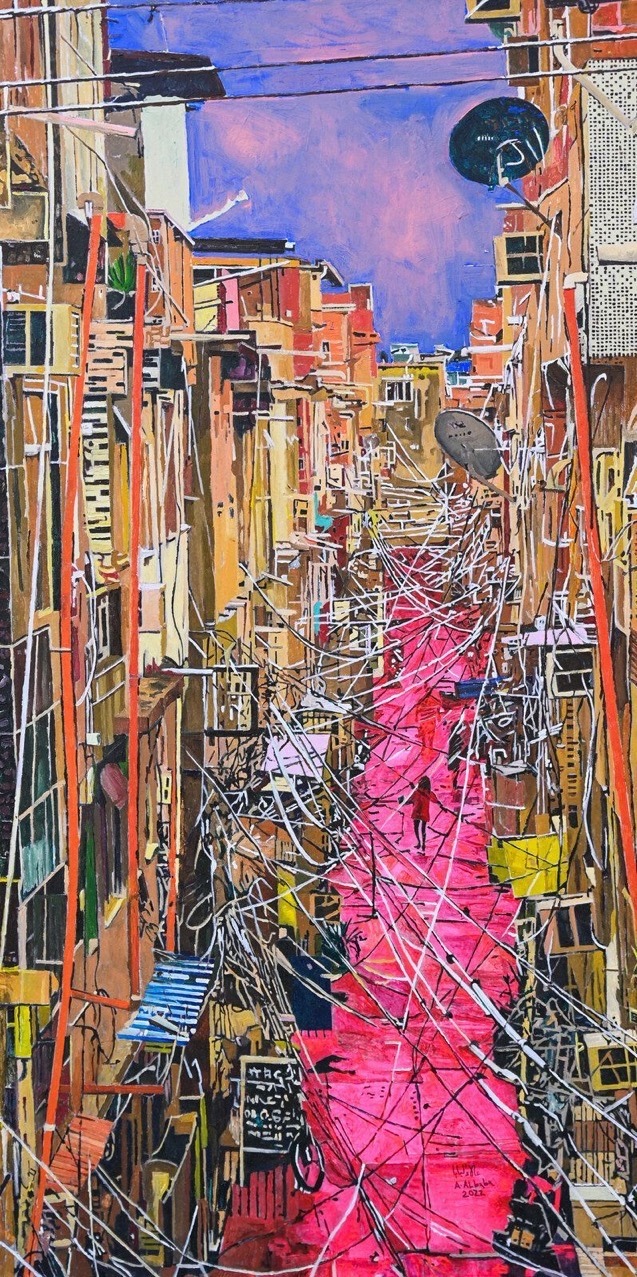
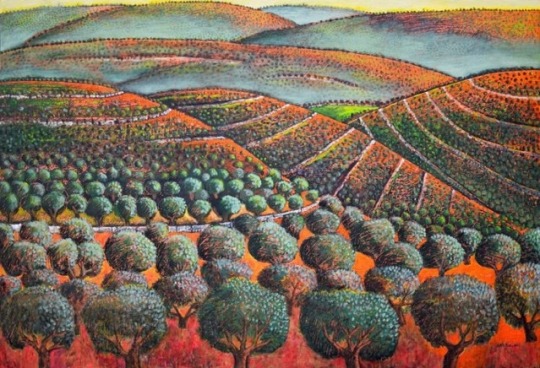

the old gate to the city, ibrahim hazimeh // tamra, nabil anani // yaffa, sliman mansour // the camp, alaa albaba // olives from west ramallah, nabil anani // illegal inhabitants, ahmad canaan
personally i think the camp, and tamra are my favourite. just… wow.
Ohhh, I love ALL of these, they're so beautiful!! Thank you so much for sending this in!
107 notes
·
View notes
Text
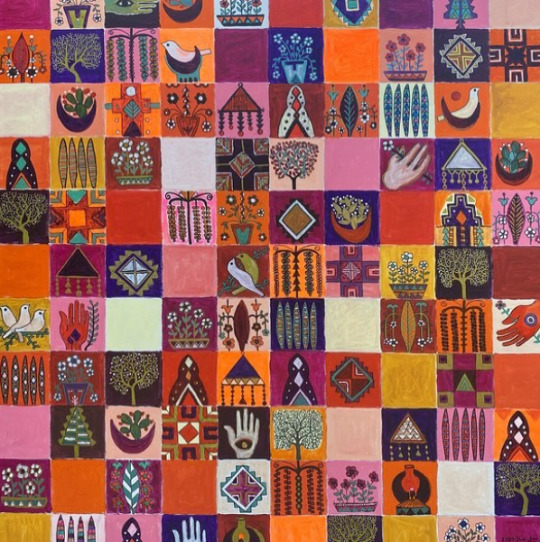
palestinian folklore (2020) - nabil anani
#free palestine#palestine#gaza#long live palestine#from the river to the sea palestine will be free#palestinian art#art#pinkcore#palestinian folklore
22 notes
·
View notes
Text

Nabil Anani - Demonstration #2, 2016
13 notes
·
View notes
Text

NABIL ANANI ( Palestinian artist ,1943-) Mother’s Embrace, 2013
23 notes
·
View notes